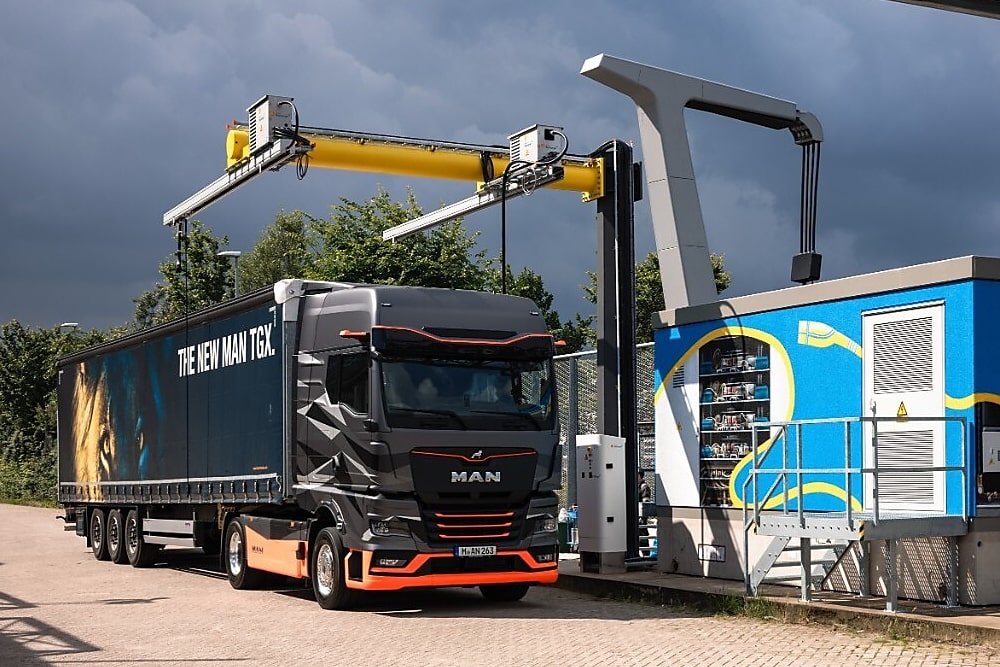A joint study by Fraunhofer ISI and Amazon has found that Europe requires fewer public fast-charging stations for long-haul electric trucks than previously expected. Utilizing Amazon’s open-source tool CHALET, the study analyzed 20,000 potential locations along European motorways and concluded that just 1,000 public megawatt charging stations could cover 91% of the anticipated long-distance electric truck traffic by 2030.
The study, part of the BMDV-funded HoLa project, aims to optimize the infrastructure for high-power charging of electric lorries. The analysis was based on traffic volume projections for 2030 and 1.6 million truck trip combinations. The findings support the EU’s Alternative Fuels Infrastructure Regulation (AFIR), which seeks to establish a robust infrastructure for electric vehicles, particularly trucks.
Patrick Plötz, head of the Energy Economics business unit at Fraunhofer ISI, emphasized the need for strategic planning: “The locations that are built will need to secure sufficient grid power, with some sites requiring up to 12 megawatts of grid capacity to support up to 20 MCS outlets. This highlights the significant energy requirements and grid infrastructure needed to support the electrification of Europe’s commercial trucking sector at scale; several European Governments are already actively working on this challenge.”
Despite the EU’s minimum infrastructure targets, the study’s results suggest that 1,000 stations are sufficient to cover the majority of electric truck traffic. The analysis also revealed that 500 stations could manage half of the traffic, underscoring the efficiency of a well-planned network.
Fraunhofer’s research incorporated conservative assumptions, excluding depot charging and assuming a practical range of 400 kilometers, which some truck models already exceed. The optimized network design considered factors such as space availability and grid connections, proposing a gradual expansion along the busiest routes.
The CHALET tool, developed by Amazon, plays a crucial role in identifying optimal charging locations by considering traffic flows, vehicle range, and journey times. This tool aids industry, governments, and local authorities in establishing effective charging infrastructure, thereby accelerating the transition to sustainable transport.
Plötz called for the industry and policymakers to expedite the development of megawatt charging systems like MCS, which are crucial for logistics operators without depot access. “This research suggests that industry needs to accelerate development and adoption of megawatt charging systems like MCS, as this enables logistics operators who do not have access to depots to effectively electrify their fleets. Commercialization of MCS can avoid the cost and complexities of securing external real estate and power, which are critical barriers to the total cost of ownership for battery electric trucks,” he stated.
The study’s findings indicate that a strategically planned network of megawatt charging stations could significantly enhance the adoption of battery-powered lorries in Europe, supporting the EU’s ambitious goals for reducing carbon emissions in the transport sector.
